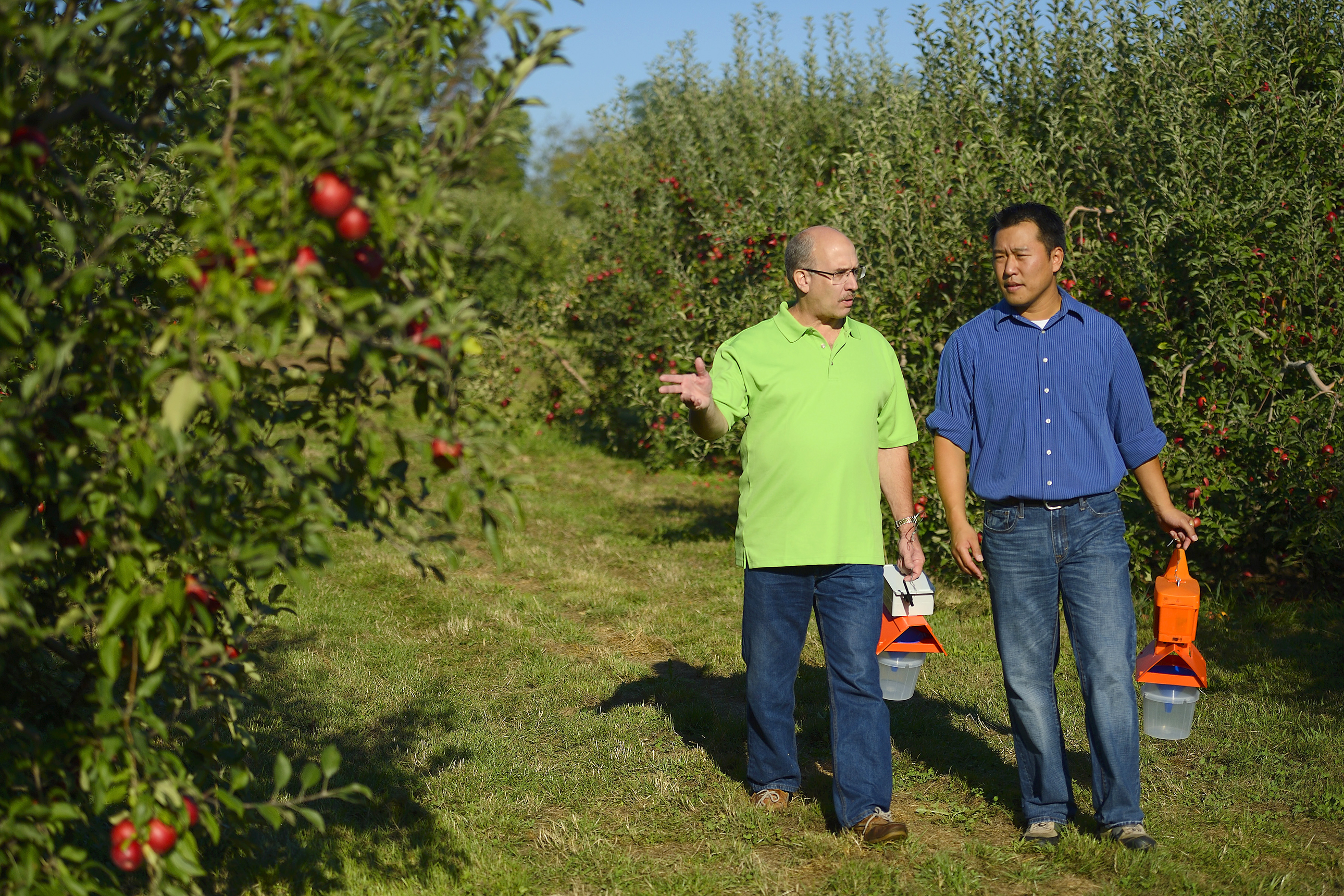West Lafayette, Indiana, USA
December 12, 2012
A new agricultural electronic insect trapping device has the potential to automatically monitor insect pest populations and reduce the amount of insecticides emitted into the environment.
The Z-Trap is an insect trapping device that automatically detects the number of target insects captured by the trap and sends the data wirelessly to the grower's mobile phone or computer. The Z-Trap is a Purdue University discovery being commercialized in the Purdue Research Park by Spensa Technologies Inc.

The Z-Trap electronic insect trapping device helps growers collect data on insect populations in crop fields and could reduce the amount of insecticides used and emitted into the environment and lower labor costs. The device is patented through the Purdue Office of Technology Commercialization and is being developed by Spensa Technologies Inc., a company based in the Purdue Research Park.
"Tracking insect populations is a fundamental part of any pest management program and being able to track those numbers in real time electronically through a smartphone or a computer helps growers choose how to use insecticides more judiciously," said Johnny Park, president and CEO of Spensa and a Purdue research assistant professor in electrical and computer engineering. "This device enables growers to electronically monitor insect populations, reduces the amount of chemicals emitted in agricultural fields, lowers labor costs and reduces the amount of insecticides purchased by growers."
In the U.S. in 2010, crop growers lost $20 billion to insect damage and spent $4.5 billion on insecticides, according to Park.

Tom Puterbaugh, Spensa Technologies vice president of products, and Spensa CEO Johnny Park prepare to install Z-Traps in an apple orchard. The Z-Trap is a Purdue discovery that has the potential to trap insects, monitor insect data and reduce the amount of insecticides emitted into the environment. (Purdue Research Foundation photo)
"Currently the technology is being used to collect data on codling moths, Oriental fruit moths and leaf rollers in apple orchards," said Tom Puterbaugh, Spensa Technologies vice president of products. "But Z-Trap will eventually be used to collect insect data from other types of crops including almond, walnut, orange, pear, grape, cherry, vegetable, corn, soybeans and many other stored products."
Z-Trap is being commercialized through the Purdue Office of Technology Commercialization. For more information, contact Jon Gortat, project manager II, (765) 588-3485, jdgortat@prf.org
Z-Trap can be used in conjunction with MyTraps.com, an online app that helps growers and pesticide consultants track the number of insects for any agricultural crops. The technology is available as an online subscription service.
"Z-Trap is a hardware that collects insect data and MyTraps.com is a software that presents the data to growers and consultants so they can make insightful decisions about insect control," Park said.
Spensa Technologies is a startup housed in the Purdue Research Park of West Lafayette. The company was founded in 2009 by Johnny Park, president and CEO. Spensa's mission is to design, develop and deliver novel technologies for the agricultural industry that will reduce reliance on manual labor, foster eco-friendly farming and enhance crop production efficiency. Their technologies leverage the team's world-leading expertise in wireless sensor networks, robotics and computer vision.
The Purdue Research Park has the largest university-affiliated business incubation complex in the country in four locations across Indiana. The parks are home to about 200 companies that employ 4,000 people and are located in West Lafayette, Merrillville, Indianapolis and New Albany.